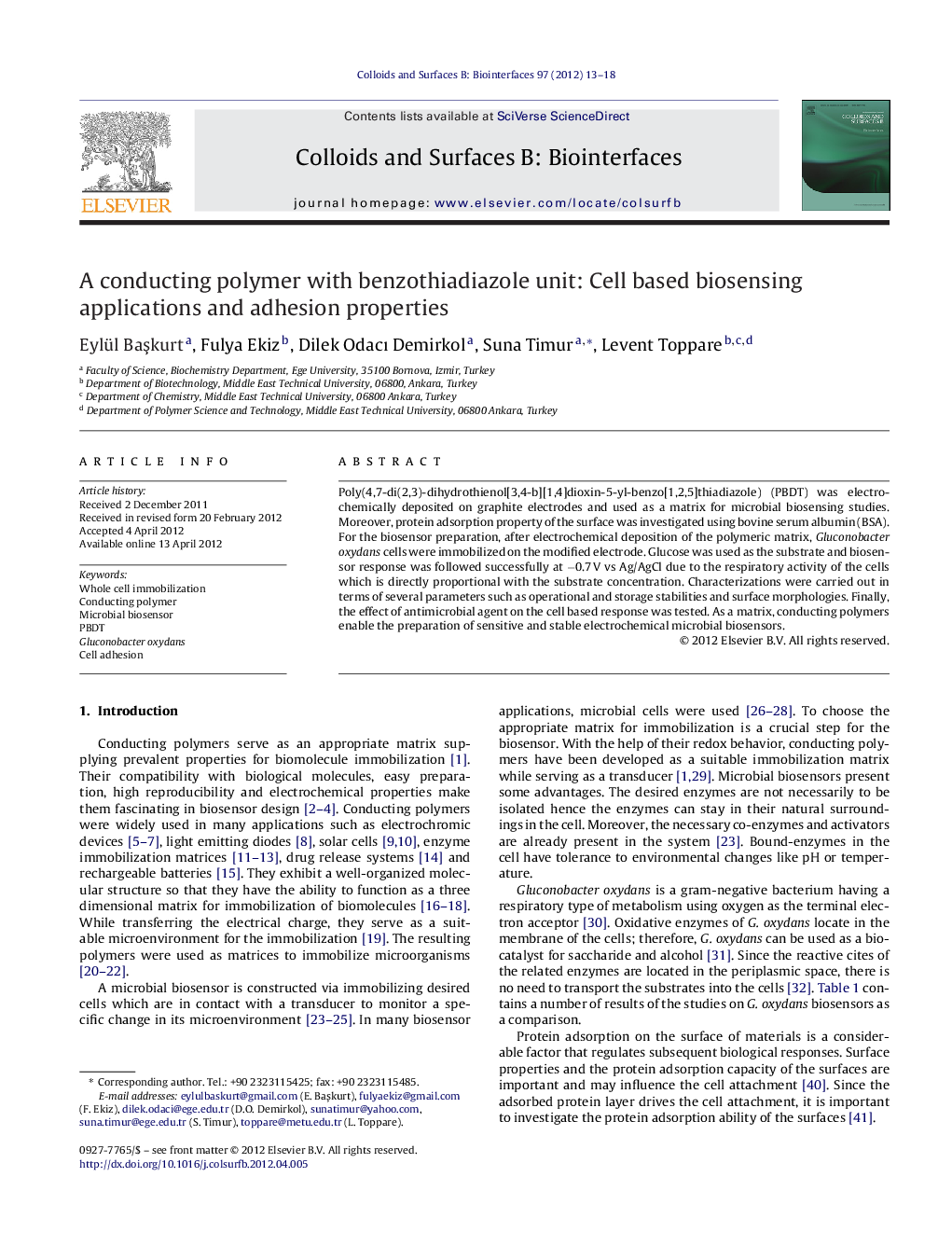| Article ID | Journal | Published Year | Pages | File Type |
|---|---|---|---|---|
| 600687 | Colloids and Surfaces B: Biointerfaces | 2012 | 6 Pages |
Poly(4,7-di(2,3)-dihydrothienol[3,4-b][1,4]dioxin-5-yl-benzo[1,2,5]thiadiazole) (PBDT) was electrochemically deposited on graphite electrodes and used as a matrix for microbial biosensing studies. Moreover, protein adsorption property of the surface was investigated using bovine serum albumin (BSA). For the biosensor preparation, after electrochemical deposition of the polymeric matrix, Gluconobacter oxydans cells were immobilized on the modified electrode. Glucose was used as the substrate and biosensor response was followed successfully at −0.7 V vs Ag/AgCl due to the respiratory activity of the cells which is directly proportional with the substrate concentration. Characterizations were carried out in terms of several parameters such as operational and storage stabilities and surface morphologies. Finally, the effect of antimicrobial agent on the cell based response was tested. As a matrix, conducting polymers enable the preparation of sensitive and stable electrochemical microbial biosensors.
Graphical abstractFigure optionsDownload full-size imageDownload as PowerPoint slideHighlights► Conducting polymers serving as sensor matrix. ► Sythesis of a novel conducting polymers as biosensing platform. ► Combination of conducting polymers with Gluconobacter oxydans cells.
